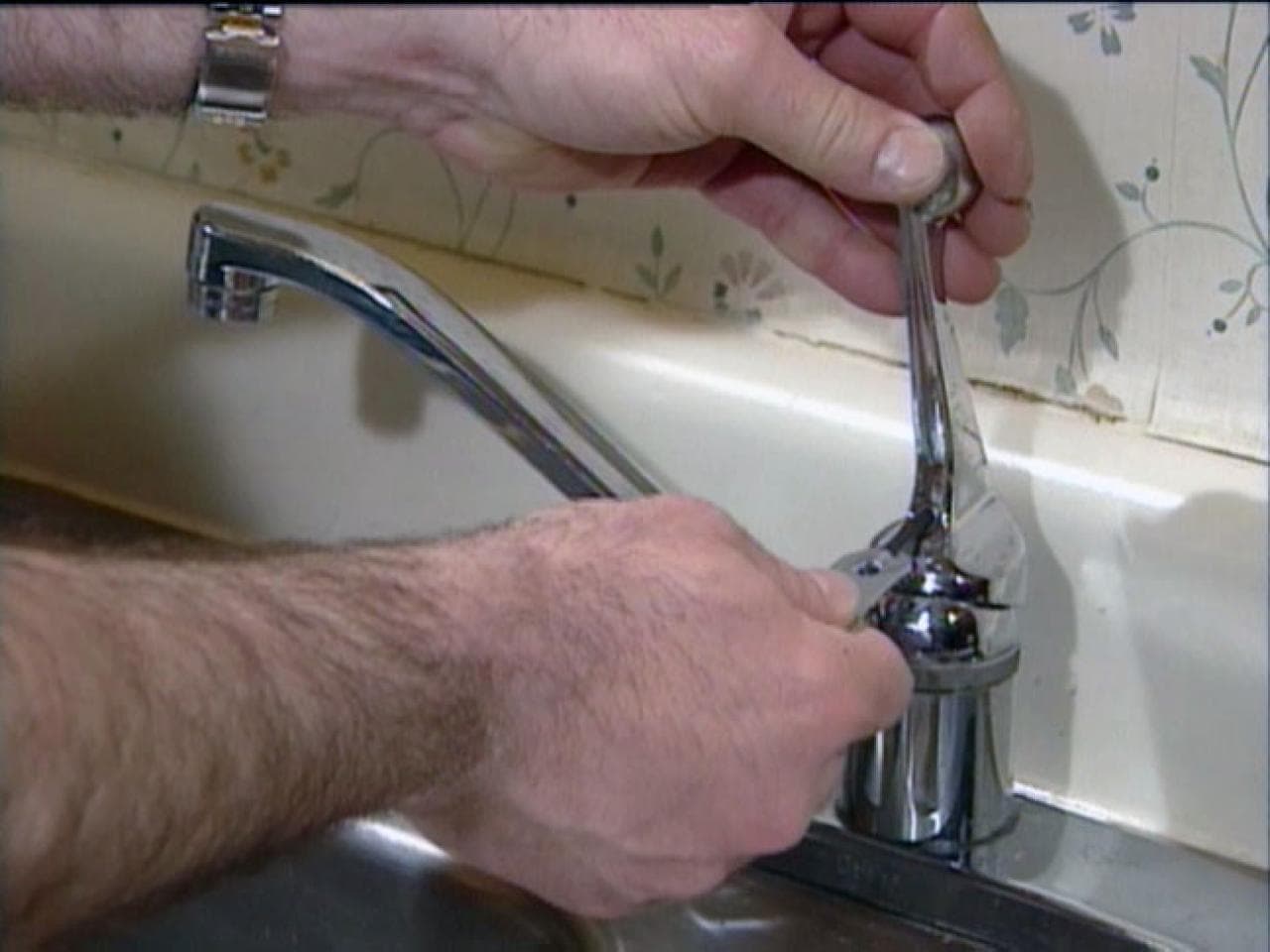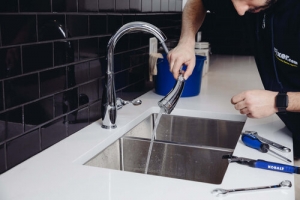Reasons Why It's Critical to Mend a Broken Faucet
Reasons Why It's Critical to Mend a Broken Faucet
Blog Article
Have you been trying to find know-how about Why It's Important to Fix Leaky Faucets?

Dripping taps might look like a small inconvenience, but their influence surpasses just the nuisance of the audio. From wasting water to incurring unneeded economic costs and health dangers, neglecting a leaking tap can bring about numerous consequences. In this article, we'll explore why it's important to resolve this typical family problem immediately and properly.
Waste of Water
Environmental Impact
Dripping faucets add dramatically to water wastefulness. According to the Epa (EPA), a single faucet trickling at one drip per secondly can lose more than 3,000 gallons of water per year. This not just strains water sources however also influences ecological communities and wildlife dependent on them.
Financial Prices
Enhanced Water Bills
Past the environmental influence, dripping taps can inflate water expenses substantially. The collected wastefulness with time converts into greater utility costs, which might have been stayed clear of with timely fixings.
Potential Residential Property Damages
Additionally, extended leaking can result in damage to fixtures and surface areas bordering the faucet. Water accumulation can trigger staining, corrosion, and also architectural issues if left neglected, causing extra repair prices.
Health and wellness Concerns
Mold And Mildew and Mildew Development
The constant visibility of moisture from a trickling faucet develops an optimal setting for mold and mold growth. These fungi not just compromise interior air high quality yet likewise present health dangers, specifically for people with breathing problems or allergic reactions.
Waterborne Diseases
Stagnant water in leaking taps can come to be a breeding place for microorganisms and various other virus, increasing the risk of waterborne diseases. Pollutants such as Legionella germs flourish in stagnant water, potentially resulting in major health problems when ingested or breathed in.
Do it yourself vs. Specialist Repair service
Benefits and drawbacks of Do It Yourself Repair Service
While some may attempt to fix a trickling tap themselves, DIY repairs feature their own set of obstacles. Without appropriate knowledge and devices, DIY efforts can exacerbate the concern or result in incomplete repairs, lengthening the trouble.
Benefits of Hiring an Expert Plumber
Employing an expert plumber guarantees that the underlying reason for the leaking faucet is dealt with efficiently. Plumbing technicians have the proficiency and equipment to detect and fix faucet issues successfully, conserving time and reducing the risk of more damage.
Step-by-Step Overview to Taking Care Of a Dripping Faucet
Devices Required
Prior to attempting to deal with a leaking tap, gather the necessary devices, including a flexible wrench, screwdrivers, substitute parts (such as washing machines or cartridges), and plumber's tape.
Typical Tap Issues and Their Solutions
Identify the kind of tap and the details problem creating the drip. Common issues consist of worn-out washers, rusty shutoff seats, or faulty O-rings. Refer to supplier instructions or online tutorials for detailed guidance on repair work.
Safety nets
Normal Upkeep Tips
To prevent dripping faucets, carry out routine maintenance such as cleaning up aerators, checking for leakages, and replacing worn-out parts promptly. Additionally, consider installing water-saving devices or upgrading to extra reliable components.
Value of Prompt Fixes
Attending to leaking taps as soon as they're noticed prevents more water waste and potential damages, inevitably saving both water and cash in the future.
Effect On Residential Property Value
Perception of Well-Maintained Property
Keeping a building in good condition, including addressing maintenance issues like trickling faucets, boosts its regarded worth and worth among possible customers or occupants.
Influence on Resale Value
Properties with properly maintained plumbing fixtures, including faucets, command higher resale worths in the realty market. Attending to dripping taps can contribute to a positive impact during residential or commercial property examinations and settlements.
Environmental Duty
Specific Contribution to Preservation
Taking obligation for repairing dripping taps lines up with more comprehensive initiatives towards water preservation and ecological sustainability. Every person's actions collectively make a significant influence on protecting valuable resources.
Lasting Living Practices
By focusing on timely repairs and taking on water-saving routines, individuals contribute to lasting living methods that profit both existing and future generations.
Conclusion
Resolving a trickling tap goes beyond plain benefit; it's a vital action toward preserving water, decreasing economic expenses, and guarding health and wellness and property. Whether with do it yourself repair services or professional support, doing something about it to fix leaking taps is a tiny yet impactful way to promote accountable stewardship of sources and add to a healthier, much more sustainable future.
How to Fix a Dripping or Leaky Faucet
A leaking faucet is one of the most common problems that homeowners encounter, but it being commonplace doesn’t make it any less annoying. The constant drip drip drip of a leaking bathtub faucet, showerhead, or sink tap can disturb your home’s serenity. Left neglected, a dripping faucet can also result in higher water bills and discoloration or mold growth in your sink or plumbing fixtures.
Fortunately, you don’t have to be a trained plumber to know how to stop a dripping faucet. With some basic tools, replacement parts, and a little patience, leaky faucet repair is a breeze. In this article, we’ll explain what causes dripping faucets and how you can fix them.
What Causes a Leaking Faucet?
Kitchen and bathroom faucets come in all manner of designs, but most involve some combination of valves, O-rings, seals, and washers. The O-ring is usually the weakest link, but any one of these pieces can wear down over time. Heat, moisture, temperature fluctuations, minerals, mold, and movement can contribute to warping and corrosion, breaking the watertight seal. This just comes with the territory of being a homeowner. Everything is always subject to wear and tear, and some component parts of your appliances and fixtures need to be replaced on occasion. At least replacement O-rings are cheap!
More rarely, dripping faucets can be a symptom of excessively high water pressure. Were this the case in your home, you would probably notice that the leak is not isolated to one faucet. Water pressure issues are harder to resolve on your own. We recommend contacting a professional plumber if you suspect your water pressure is too high.
How to Fix a Dripping Faucet
Pipe wrench or monkey wrench Allen wrench set Screwdrivers Old towel or rag Shut off the water.
Before you do anything, you need to turn off the water to keep from drenching your kitchen or bathroom. You should find a valve under the sink and against the wall. Once you’ve turned this valve, try turning the faucet on to confirm that the water source has been cut off.
If you can’t locate your local valve for the faucet you’re working on, you can always shut off the water to the house at the main valve. Of course, this will prohibit anyone from using the sinks, showers, or toilets while you’re working on the faucet that’s giving you trouble.
Plug or block the drain.
You’ll be disassembling the faucet and removing some small bits of hardware. Plug the drain with a stopper or rag to avoid the possibility of a small screw falling into your P-trap.
Take apart the faucet assembly.
There are several varieties of kitchen and bathroom faucets, each with its own manner of assembly. For detailed instructions on how to disassemble your faucet, you can refer to the fixture’s manual or contact the manufacturer. If you know whether you have a ball, disc, cartridge, or compression faucet, you can find detailed schematics online.
In general, you need to begin by removing the faucet handles. You might notice a small screw that you’ll need to remove with a screwdriver or Allen wrench. If you don’t see any visible securing hardware, it’s likely hidden under a decorative cap that can be unscrewed or popped off with flathead screwdriver.
Remove each piece methodically, consulting a schematic when necessary. Take notes or arrange the pieces in such a way to make it easier to correctly reassemble the faucet later.
Remove the cartridge.
Once you’ve removed the handles and securing hardware, you should be able to remove the valve cartridge or stem. Some cartridges will slide right out. Other faucet models will require you to loosen a nut with a pipe wrench before you can remove the valve stem.
Examine the exposed hardware.
With the cartridge or stem removed, inspect the component parts. Check the rubber O-rings for wear and tear. Also examine the seat washer for corrosion or other damage. These pieces are usually the responsible parties for a dripping faucet, but it’s worth inspecting the other component parts while you have the faucet disassembled.
Find replacement parts.
Once you’ve identified which faucet component has failed, find an identical replacement. Your local hardware store should have O-rings, seat washers, and other standard components in stock. If you have a luxury or uncommon faucet, you may have to contact the manufacturer for a replacement part.
It’s a good idea to take your old parts with you to the hardware store so you can compare them with the store’s inventory and be sure you’re purchasing the correct replacement.
Reassemble the faucet.
With your new parts in hand, reconstruct the faucet and handles. Don’t be tempted to overtighten screws or nuts. You might think this could create a better seal, but it can instead damage or bend a delicate part of the assembly and create a new problem for you.
Turn on the water and test the faucet.
The only thing left to do is test your work. Unplug the sink, turn the water back on, and try the faucet. Congratulate yourself on a job well done!
https://www.libertyhomeguard.com/how-to-fix-a-dripping-or-leaky-faucet/

I'm very taken with Water Dripping from Faucet: Why and How to Fix and I hope you enjoyed reading our blog entry. Liked our blog? Please share it. Help someone else discover it. I am grateful for being here. Please come by our website back soon.
Report this page